Advertisement
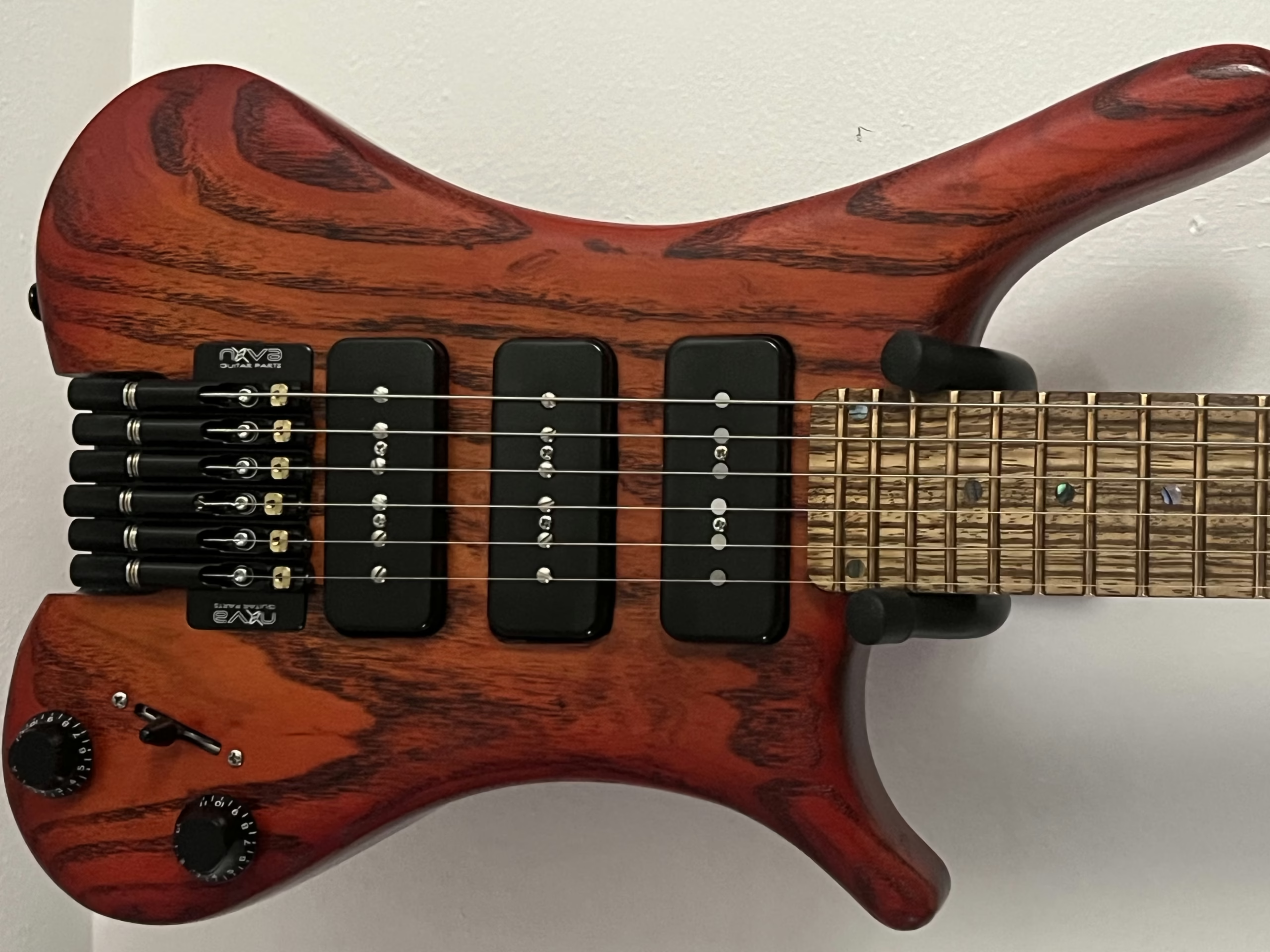
Photo credit: Guitar Thrills Magazine
____________________________________________________________________________________
RELATED ARTICLE: Why I’m Not a Fan of Headless Electric Guitars: A Traditionalist’s Take in a Modern World”
It is a surprise that I would take the time to review a guitar with a headless neck. I was quite clear on my traditional views. The recent article that was published in Guitar Thrills Magazine broke down the reasons for my opinion. Honestly, they were they were “on point” and difficult to debate. The article is entitled “Why I’m Not a Fan of Headless Electric Guitars: A Traditionalist’s Take in a Modern World”. (visit www.guitarthrills.com).
One of the points that can’t be debated from the article was the:
The Feel Isn’t the Same
When I rest a headless guitar on my lap or sling it over my shoulder, something feels missing. It’s not just the lack of weight—it’s the lack of character. Headless guitars feel like they’ve been stripped down for the sake of efficiency. Don’t get me wrong, I understand the benefits: better tuning stability, less neck dive, more compact size. But those advantages have always felt like solutions to problems I never had.
There’s also the tactile disconnect. Tuning from the bridge end still feels awkward to me, even after weeks of adjustment. The muscle memory just isn't there—and maybe that’s the point. But for me, it turns a familiar ritual into a foreign task.
Enter John from Anesidora Guitars
John read my article but didn’t criticize my perspective. Instead, he offered up the J804 for review. If you are a traditionalist as well, you may have not heard of the J804 from Anesidora Guitars. However, they are hugely popular and are sold direct and through Guitar Center. However, it still doesn’t have a headstock. Tuning is not the same, and the footprint is much smaller than most of the electric guitars that I am used to playing. Despite my hesitations, I gave it a go:
The review of the J804 from Anesidora Guitars
The Tech specs on the guitar are as follows:
PROS:
Ergonomic Headless Design
Custom-Built Quality
Versatile Pickup Options
Exceptional Fret Access
High-End Hardware
CONS:
Not Widely Available
Learning Curve with Headless Setup
Premium Price Tag
Limited Aesthetic Customization (Compared to Larger Brands)
No Big Brand Recognition
Headless Showdown: Anesidora J804 vs. Strandberg Boden vs. Kiesel Zeus
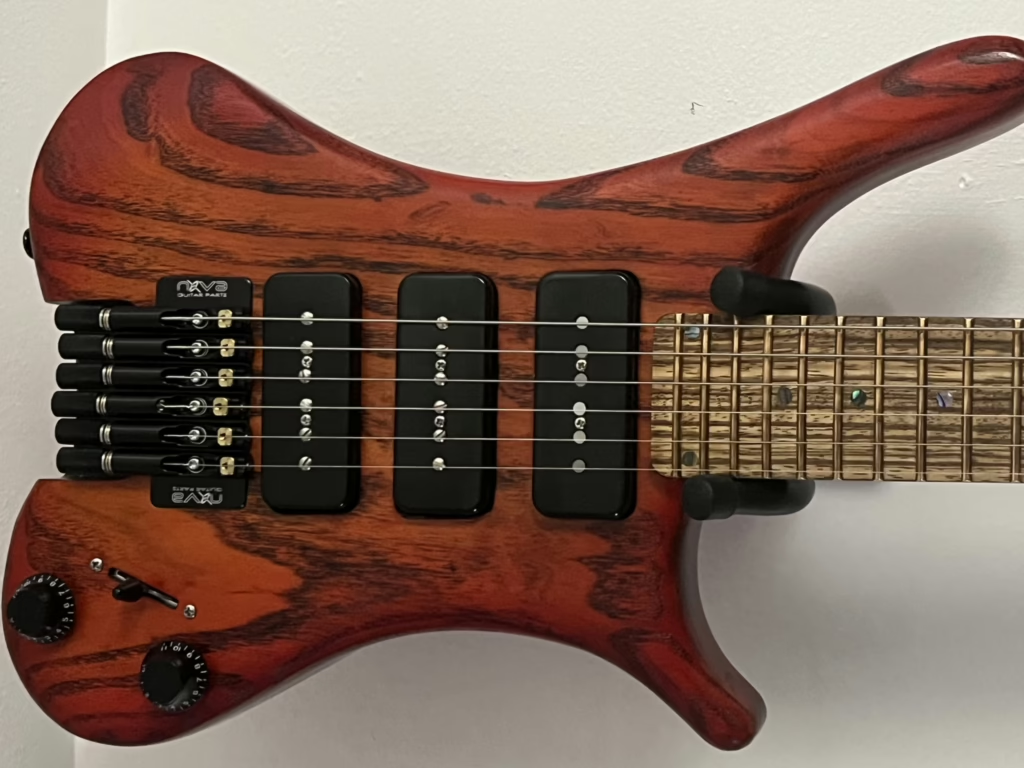
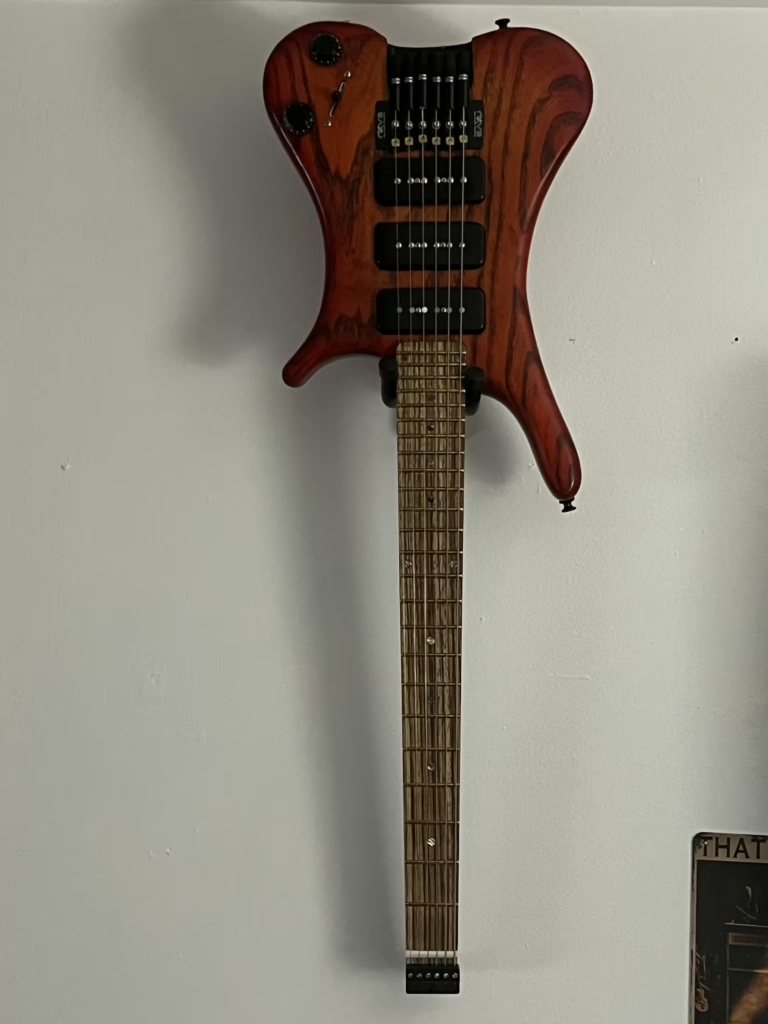
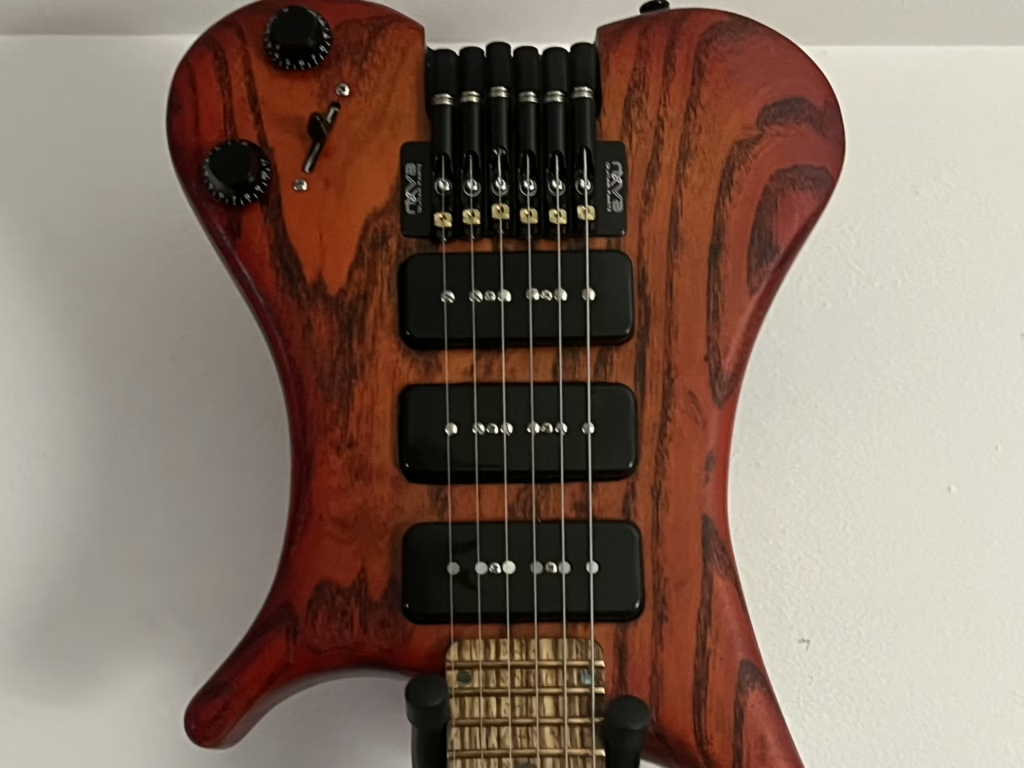
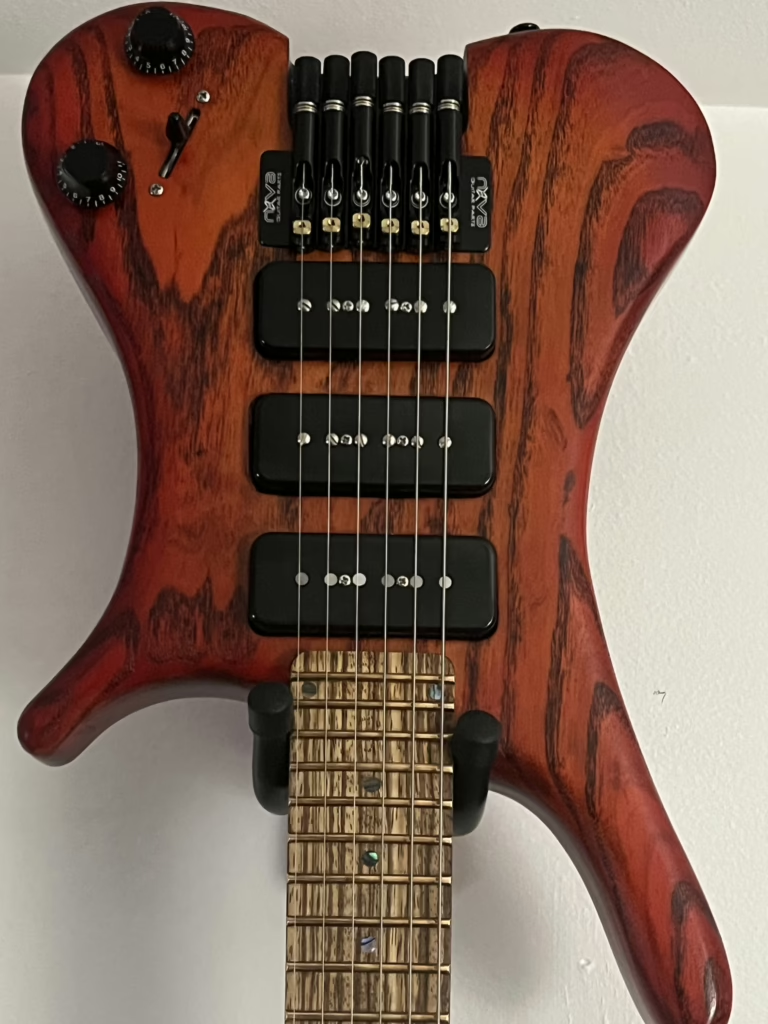
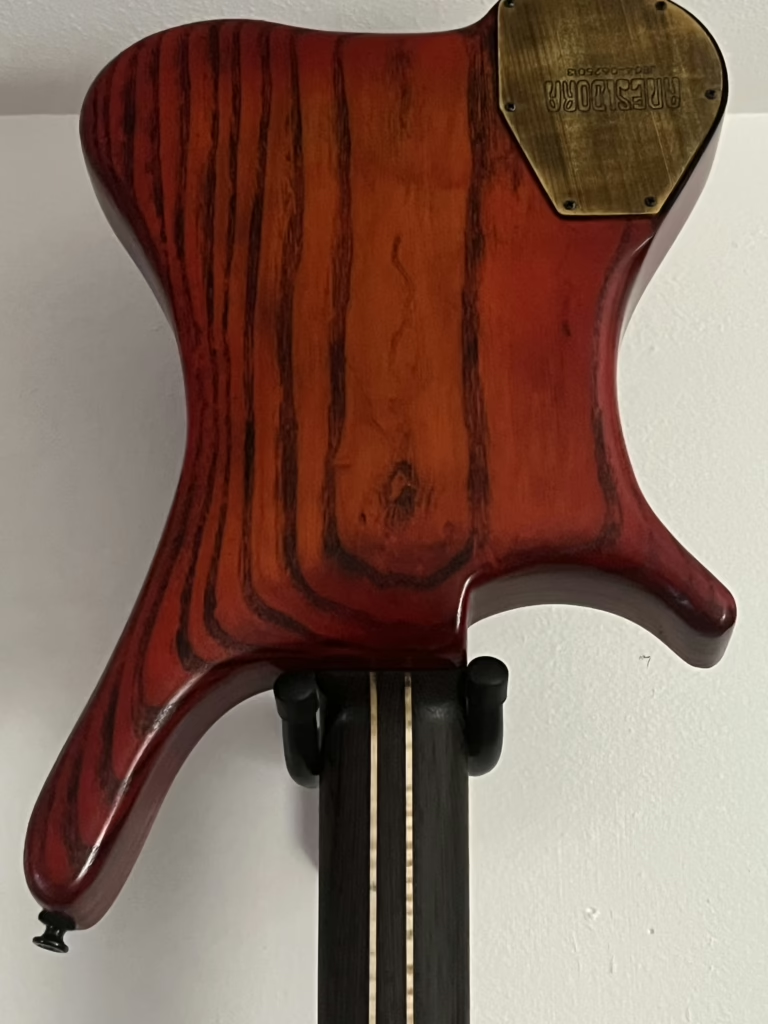
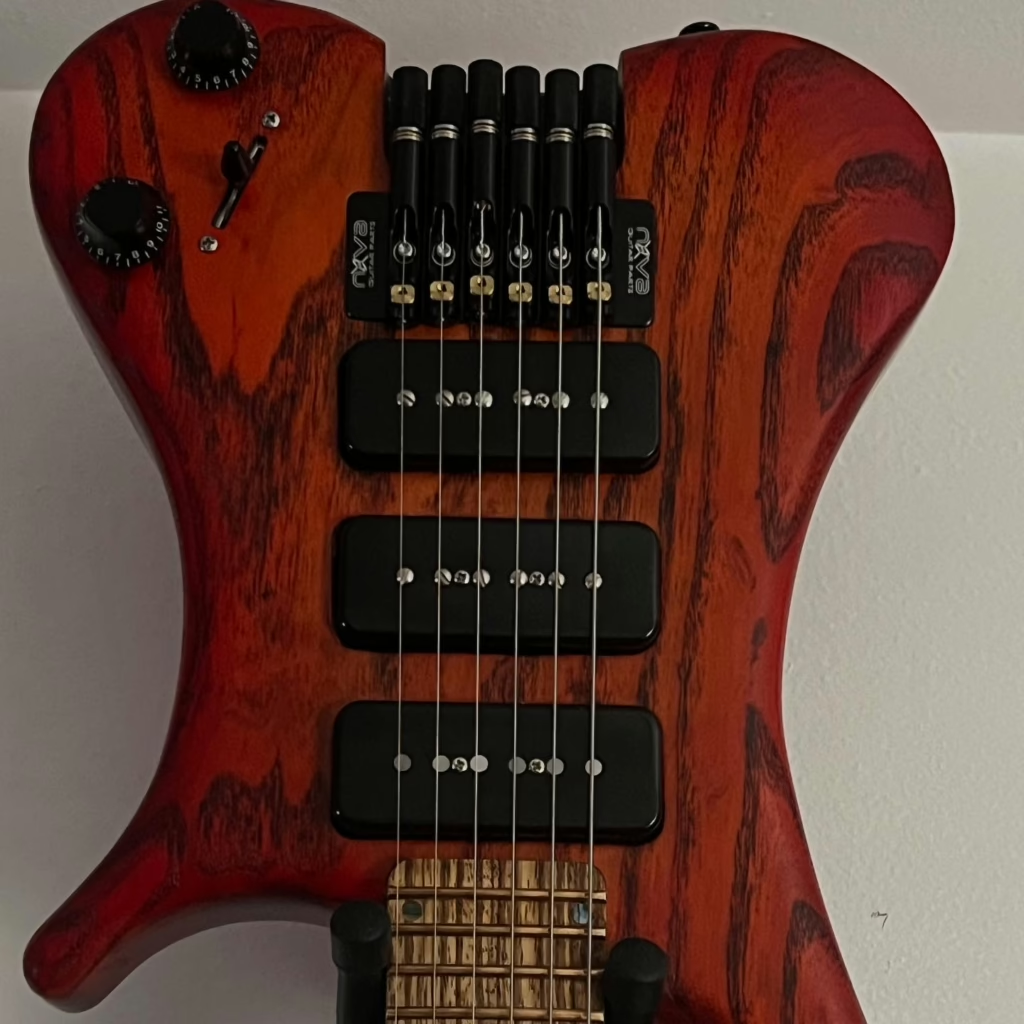
Photo credit: Guitar Thrills Magazine
Tech Specs:
The body wood standard choices (or options that don’t carry additional charges) are white ash with a maple top and the standard wood species option for the neck is maple. As for fretboard radii, Anesidora offers just about all the standard options out there (7.25” up to 17”) of a customer wants something different, they can just ask. They can usually accommodate them. They use jumbo stainless steel pretty frequently, also offer phosphor bronze frets in either a medium or jumbo size. They offer medium stainless steel as an option as well.
For scale lengths, they offer just about anything from 24” up to 25.5” hope to offer scale lengths in the future.
As for pickups, some of their earlier builds have included Seymour Duncan and Dimarzio pickups. However, they recently became an authorized Fralin dealer and will use only their pickups in all builds.
For Controls they include master volume and tone with the option of push/pull mods (ie phase inversion, coil splitting, series/parallel, etc). The standard options for pickup selectors are usually 3- or 5-way blade style switches but will also offer the 5-way super switch as well as the Freeway Switch (like the traditional 3- or 5-way blade switch but with twice the number of combinations of either switch). The bridge hardware they use Nova.
A comparison of headless guitars, three contenders stand tall—Anesidora’s J804, Strandberg’s Boden, and Kiesel’s Zeus. Each offers a unique approach to comfort, tone, and performance, but they serve different types of players. The Anesidora J804 is a boutique-crafted powerhouse, blending ergonomic design with vintage-inspired tonal flexibility. It’s perfect for those who crave artisan craftsmanship, deep customization, and an alternative to mass-market options. The J804 stands out with its Nova bridge system, versatile pickup wiring, and hand-selected woods—making it a sleeper favorite for tone chasers and pro players alike. Strandberg’s Boden is the lightest and most ergonomic of the three, with its revolutionary EndurNeck and ultramodern body carve. Ideal for tech-savvy players and touring musicians, the Boden emphasizes futuristic comfort and speed.
Meanwhile, Kiesel’s Zeus strikes a balance between familiarity and innovation. With extensive custom ordering options, a wide range of scale lengths, and USA factory-direct pricing, it’s the go-to for players who want to tailor every detail—without paying boutique prices.
In short:
Each guitar earns its place. The real question: which one fits your hands. To me the J804 from Anesidora is our first choice over the other brands mentioned. The pickups used can be a “game changer” and the deciding factor on whether I decide to purchase a guitar or not. The Franklin pickups were a huge deciding factor for me. The P90s were a superb choice by Anesidora.
With its headless layout and lightweight body, the J804 offers enhanced balance and comfort for extended playing or travel. It's sculpted for technical stylings—nutless low profile, fret access, fast neck, and endless tonal options via pickup configurations
INTERVIEW WITH ANESIDORA GUITARS AND GUITAR THRILLS MAGAZINE
Guitar Thrills: The J804 is a standout in the headless market—what inspired its design, and how has it evolved since the first prototype?
John: The J804 was originally a body shape I designed in a program called VCarve. One day I was just sort of improvising a guitar body shape by just drawing vector lines in the software. What I ended up with was the Kuranda body shape which is our 7-string guitar prototype that we are currently perfecting and looking to offer as a customizable model in the future. After first coming up with this body shape, I made more adjustments to it later to essentially make a 6-string version of the same guitar. With that, I made some additional changes to the upper half of the guitar experimenting with the curves of the horns. This eventually became the J804.
Guitar Thrills: Many of your builds use exotic or nontraditional woods. How do you approach wood selection in terms of both tone and aesthetics?
John: With quite a few of our earlier models and prototypes, the wood choices were just a matter of experimentation. I’m always trying to think of things no one else has tried yet. One example that comes to mind is something I’ve tried with zebrawood. I wanted to see what would happen when using this wood species as a two-piece top with a traditional sunburst finish. I was really pleased with how it turned out so much that it will be a new type of finish that we’ll offer as a selectable option with any of our models going forward.
I also really like the tone you get from zebrawood. To me, it’s a lot like hard maple but with more low mid resonance since the pores of the wood are much wider than what you typically find in maple. For this reason, I love using zebrawood in the neck since it has a good cubic density making it sturdy against string tension while still giving the guitar a fair amount of low mid frequency. I also really like the way it looks under clear lacquer. You can get some unique chatoyancy that in my opinion can look very similar to Birdseye maple.
Guitar Thrills: What made you choose the Nova headless system for the J804, and how does it complement the guitar's overall playability?
John: I picked Nova bridges for our guitars because I had seen them on other boutique headless guitars and thought I’d give them a try. I was impressed with how they made the guitars sound and how lightweight they are. It’s kind of a shock to me how some bridges add so much weight to an instrument and almost drown out the resonance of the woods since the metal in the bridge seems to ring out more loudly than anything else. Not with Nova. While you do still hear some metallic resonance from the bridge, it does not distract you from hearing the Tonewood’s. In fact, I would argue that the way Nova bridges resonate gives the guitar more articulation and can get the notes to ring way more clearly.
I also really like how much range you must move the saddles back and forth for intonation. It really does make a huge difference in how easy they are to set up. You can even take the brass pieces that encounter the string out of the barrel and flip them around to move the contact point even closer or further away. Pretty clever design work if you ask me!
Guitar Thrills: Anesidora guitars seem to blend vintage warmth with modern innovation—how do you balance tradition with experimentation in your builds?
John: Well I’ve been around guitars for nearly 24 years now and I’ve seen a pretty diverse array of this type of instrument and in a broad sense, I see that folks will usually take one of two sides when making or marketing a new guitar design. They’ll either go for a more vintage/throwback type of appeal or something more modern/futuristic. My initial idea when putting these first models together was to see what would happen when combining both and in theory attracting attention from both audiences. More specifically, I wanted to create something that looked more futuristic but had potential to have a more vintage/throwback kind of tone.
For that reason, I’m really stoked to have Fralin making the pickups that go in our guitars. Lindy is just so good at taking traditional ideas and improving them with his own modern concepts. I remember the first time I visited his shop in the north end of Richmond I got to hang out and talk with him in his office while he was working. I remember asking him about how he wax potted his pickups. He told me that for about 20 years he did some extensive research on wax potting and the wax formula they currently use apparently has the least amount of influence over the tone of the pickup which is to say that you still get all the tonal niceties of a pickup that isn’t wax potted while still avoiding any risk of microphonic feedback that you would normally get from a pickup that isn’t wax potted.
From that first conversation I had with Lindy, I kind of just knew right away that I wanted to take on a similar kind of approach to lutherie work and creativity in general. I could see that from what he had accomplished in creating his own unique wax potting formula, he had come up with a unique solution to the problem with potted vs unpotted pickups. While we’ve had wax potting for a long time now, no one had done it like Lindy has which is one thing that makes his work stand out.
I want Anesidora to take on a similar aim in our work where we put forth much of our creative efforts in developing new concepts as the result of working to fix errors - or not so niceties as I like to call it - of past standards just like Fralin has.
Guitar Thrills: How much input do players have during the custom order process? What kinds of requests have surprised you or influenced future models?
John: I like to give our customers as much creative room as possible when they put in an order for a custom build. They can first choose which model they want and from there they can pick tons of different options like wood species, pickup types (humbuckers, P90’s, single coils, etc), scale length, fret type, and so on. What intrigues me the most with the custom order process is how I see people really thinking outside the box or beyond what’s listed on our order forms. I’ve had folks ask for all kinds of things that have given me tons of inspiration. Anything from baritone scale lengths to unusual pickup combinations to intricate circuit designs. I remember having one person ask if I could make them something (I forget which model at the time) with three different kill switches - and all in weird places so they could cut the signal in and out using bizarre rhythms. For these reasons, I love to give our customers an open canvas to etch their ideas onto. For me, it really reinforces the idea that people love having the freedom to choose and when you give them that freedom (within reason of course!) it can really make you more engaged in something that you’ve already loved for such a long time.
Guitar Thrills: What types of players or genres do you see gravitating toward the J804—and have any used it in unexpected ways?
John: I see a diverse audience showing interest in what we do despite headless guitars having been an esoteric thing in the past. I’ve heard from people who are into prog and 70’s rock like Pink Floyd and King Crimson to some of the heavier or more recent stuff like August Burns Red and Black Dahlia Murder as well as the more fusion stuff like Allan Holdsworth and Tribal Tech - which I think is awesome. Right from the beginning it had been a goal of mine to create something that would attract more than just one type of person and it’s so cool to see that it’s already happened so early on. Knock on wood I hope that never goes away!
Guitar Thrills: What’s next for Anesidora Guitars? Are there new models, finishes, or concepts you’re excited to bring to the headless scene?
John: We’re always working on new things all the time and looking for new problems to solve to bring the kind of instruments our audience craves. Because we enjoy having a diverse group of people showing interest in what we do, we’re striving to have a diverse array of models to choose from. A few things we’re hoping to come out with soon are a new baritone guitar model as well as our first ever bass model since we’ve had quite a few folks showing interest in those two things. Apart from that, we are continuously and diligently aiming to change the way people think about what the headless guitar can be by creating something that will help players reach their hidden potentials and push their music into uncharted territories.
Conclusion: When it comes to modern guitar innovation, Anesidora Guitars is making waves with its precision-built, headless electric designs handcrafted. Known for their ultra-lightweight feel, balanced ergonomics, and surgical tuning stability, Anesidora model like the J804 blend cutting-edge performance with stunning woodwork and tone customization. With features like carbon-reinforced exotic wood necks, Nova bridges, and boutique-grade pickups—including Fralin, Dimarzio, and Antiquity P90s—each guitar is purpose-built for clarity, speed, and tonal flexibility. Whether you're a progressive player, technical shredder, or tone chaser, Anesidora offers a handcrafted alternative to factory-built instruments—designed to keep up with your creativity and precision on stage or in the studio.
Did I get over my traditional views on guitars needing to have a headstock to garner my attention and support? I believe so. A lot of time went into the review of the J804 just so that I could become a fan of headless guitars. I admit, it still a change that I must get used too. However, it has become easier with the review of the J804 from Anesidora Guitars.
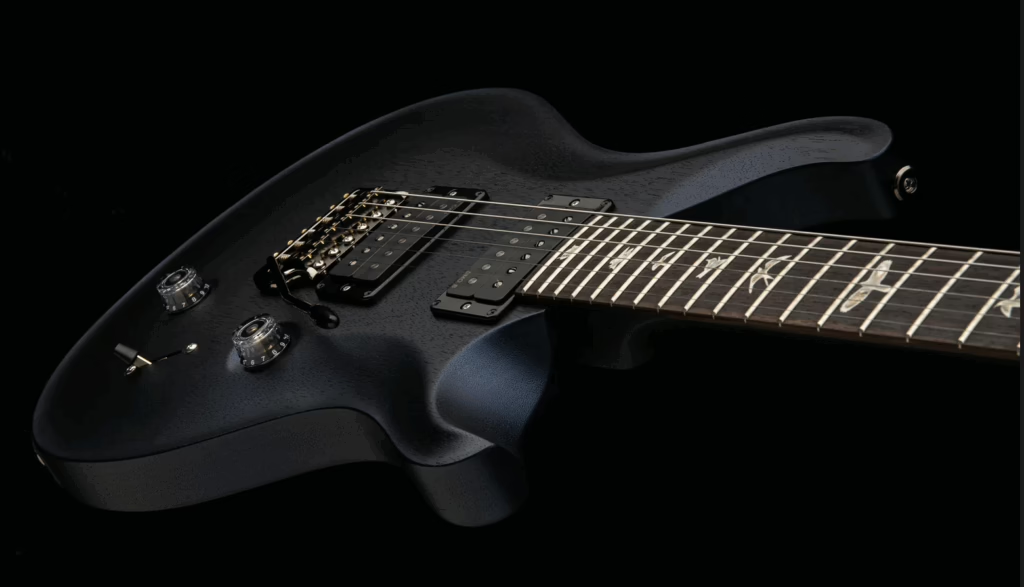
A RECAP OF WHAT YOU MIGHT HAVE MISSED